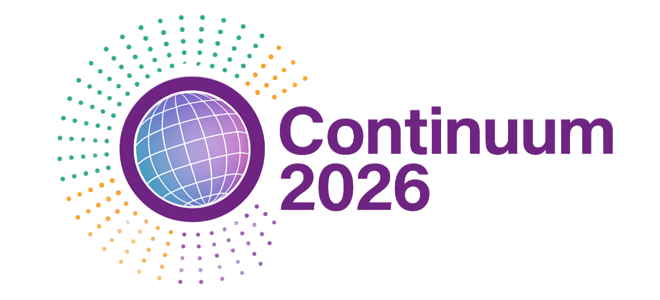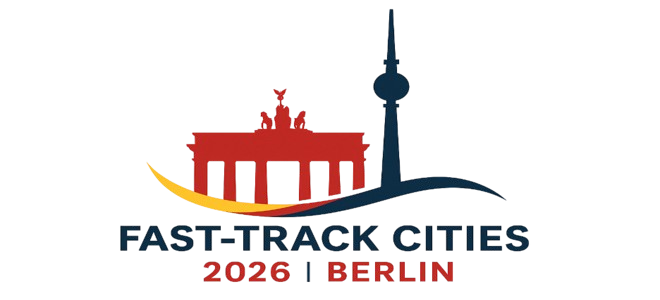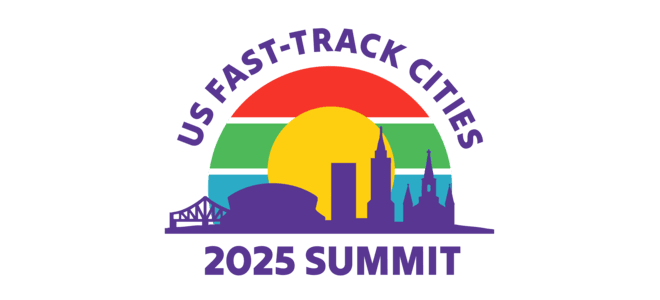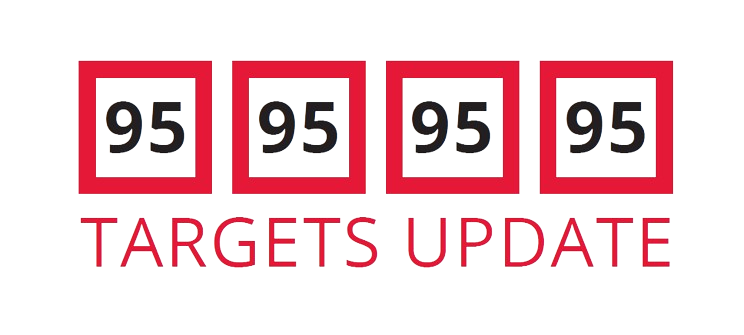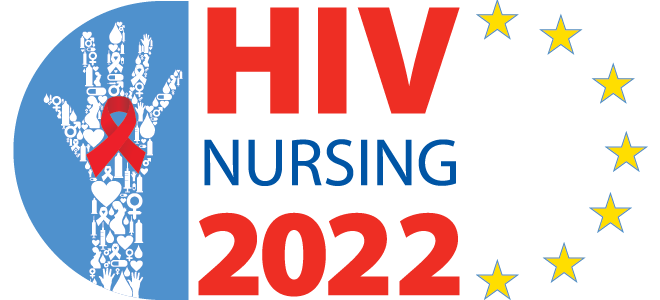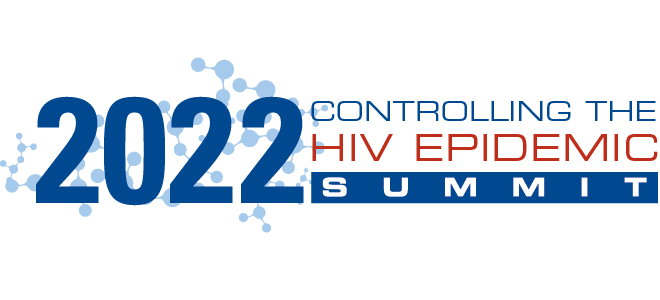IAPAC HIV POLICY BRIEF (July 2025)
Disrupting Business as Usual to Fast-Track
Lenacapavir Scale-Up in the United States
Despite remarkable scientific progress in HIV prevention, including the U.S. Food and Drug Administration (FDA) approval of lenacapavir as a long-acting injectable pre-exposure prophylaxis (PrEP) option, the United States faces a persistent failure to equitably translate innovation into impact. The same barriers that have hindered large-scale uptake of oral and injectable PrEP uptake – high costs, fragmented service delivery, structural stigma, and underinvestment in community-based infrastructure – threaten to constrain the reach of this next-generation prevention tool globally, not just in the global South.
These challenges are further compounded by an increasingly unstable federal funding environment for HIV prevention, and a lack of clarity regarding whether the U.S. Government remains truly committed to the PREVENT pillar of the Ending the HIV Epidemic (EHE) initiative. This IAPAC Policy Brief offers a roadmap for bypassing “business as usual” by addressing prohibitive costs, expanding delivery models, dismantling stigma, and centering equity to ensure that lenacapavir and future innovations benefit all communities and populations vulnerable to HIV, not just the privileged few who have historically benefited from PrEP access in the United States.
Defining the Scope of U.S. PrEP Scale-Up
Recent data underscore the vast unmet need for PrEP in the United States. The estimated number of people who would benefit from PrEP was 2.2 million in 2022 while only 366,359 people were assessed to be taking PrEP in 2021 (Kourtis et al., Annals of Epidemiology, 2025; Mann et al., JAMA, 2024). The gap is most pronounced among key populations. PrEP use rates among Black Americans and Latinos with PrEP indications were just 15% and 18%, respectively. There are also significant geographic disparities, with states in the South reporting the lowest levels of PrEP coverage (39%) despite accounting for 53% of new HIV diagnoses in the United States. These data reinforce the urgent need to scale up novel PrEP modalities like lenacapavir through equity-centered strategies that dismantle barriers related to geography, race, insurance coverage, and delivery model access.
State-level data reveal stark disparities in PrEP provision relative to population need. A population need for PrEP (PPN) analysis found significant PPN across all 50 states and the District of Columbia, but most notably in California (308,903), Florida (216,453), Georgia (131,347), North Carolina (140,078), and Texas (288,775) (Kourtis et al., Annals of Epidemiology, 2025). Disaggregated by key population, men who have sex with men (MSM) represented the population with the highest PPN, with percentages of MSM in need of PrEP as a percentage of the total state-specific PrEP need as high as 72%, 79%, and 80% in Louisiana, Alabama, and South Carolina, respectively. Although transgender women were not included in the analysis, prior studies have cited an acute need for PrEP in this key population.
Worryingly, a U.S. PrEP use trends analysis (Mann et al., JAMA, 2024) found slow uptake of long-acting injectable cabotegravir (CAB-LA) for PrEP since its FDA approval in 2021 compared to significantly higher uptake of branded and generic TFV/FTC following FDA approval of branded TAF/FTC in 2019 and the availability of a generic TDF/FTC in 2020. The sluggish CAB-LA uptake has been attributed to payer-imposed utilization management restrictions, including prior authorization requirements. But it is also challenging for smaller clinics to stock CAB-LA because of its price, notably the risk of paying for the drug upfront without guaranteed reimbursement. Additionally, some providers remain unfamiliar with injectable PrEP or face clinic workflow challenges (Patel et al., Curr Opin HIV AIDS, 2025). And cultural stigma and mistrust surrounding injectable medications – particularly when used for disease prevention rather than treatment – likely also contributed to hesitancy among potential PrEP users.
To achieve equitable outcomes in the rollout of lenacapavir and other long-acting modalities, scale-up strategies must be intentionally directed toward states and communities with the highest unmet need and the lowest levels of PrEP coverage. Tailoring efforts based on population-specific barriers and social determinants of health will be essential to closing the PrEP gap. The challenges encountered with CAB-LA scale-up in the United States also offer critical insights and actioning those lessons now can help avoid preventable pitfalls in the implementation of lenacapavir and future long-acting PrEP options. Without such targeted interventions, long-acting innovations risk replicating the same access disparities that have limited the public health impact of prior PrEP modalities.
Disrupting “Business as Usual”
We must build a new ecosystem for PrEP delivery in the United States. To prevent lenacapavir from becoming another example of a biomedical innovation that fails to reach those who need it most, we must begin by decoupling access from cost. As a first option, Gilead Sciences should be called upon to voluntarily reduce the cost of lenacapavir in the United States to ensure broad and equitable access, particularly for communities facing the greatest HIV prevention gaps. Even though the recent Supreme Court ruling in Kennedy v. Braidwood upheld the Affordable Care Act (ACA) preventive services mandate, coverage and distribution can still become impossibly complex with an expensive provider-administrated PrEP as has been seen with CAB-LA’s limited scale-up in the United States.
If voluntary price reduction proves insufficient or unsustainable, and especially if the current Secretary of Health and Human Services politicizes enforcement of no-cost PrEP coverage as mandated by the ACA, advocates should call upon Gilead Sciences to enter into licensing agreements with qualified U.S.-based generic manufacturers to produce lower-cost versions of lenacapavir for domestic use. Such licensing arrangements are typically reserved for low- and middle-income countries but must now be extended to address equity challenges within high-income countries like the United States, especially for populations excluded from traditional healthcare access pathways, including uninsured individuals, migrants, and communities of color.
If none of those options are pursued – commercial and ethical questions requiring a cogent rationale from Gilead Sciences – there is an urgent need to mitigate persistent insurance-related barriers and ensure uninterrupted access to PrEP. Although it will not make up for a functioning healthcare system that prioritizes HIV prevention, Gilead Sciences must implement a generous patient assistance program with a low-income eligibility threshold that fully eliminates cost-sharing. Such a program should prioritize uninsured and under-insured individuals who are least able to absorb out-of-pocket expenses, which remain one of the most significant obstacles to initiating and sustaining PrEP use. By adopting a no-cost model for these populations, Gilead Sciences can help close the gap between PrEP efficacy and real-world uptake, particularly in communities disproportionately impacted by HIV.
Given growing uncertainty around the ACA’s survival, the future of Medicaid, and how HIV prevention may be deprioritized under the Make America Healthy Again (MAHA) agenda, the patient assistance program must extend through the duration of the Trump administration. This timeline provides a critical safety net for vulnerable populations while broader public and private sector reforms to support PrEP access are debated or delayed. Gilead Sciences has a unique opportunity – and responsibility – to act in the public interest at a time when the policy environment is shifting and the stakes for HIV prevention are higher than ever.
At the same time, government agencies at the federal, state, and municipal levels can exercise public health purchasing power to negotiate fair pricing with Gilead Sciences and ensure widespread access to no-cost PrEP. By centralizing procurement, much like existing models for childhood immunizations, public sector programs can reduce the financial barriers that typically impede scale-up. Emergency access mechanisms should also be established to rapidly make lenacapavir available through community clinics, public health departments, and retail pharmacies in areas of high unmet need.
To sustainably fund access and infrastructure, the United States should also create a National PrEP Access and Equity Fund, a public-private partnership designed to subsidize high-cost PrEP modalities for those without coverage, while simultaneously supporting the systems needed to deliver PrEP efficiently and equitably. This proposed fund builds upon and reinforces the vision articulated in PrEP4All’s advocacy for a National PrEP Program – a coordinated nationwide initiative to ensure equitable access to HIV prevention regardless of geography, insurance status, or modality preference.
As outlined in their October 2024 Path Forward for a National PrEP Program report, a National PrEP Access and Equity Fund would not only underwrite the cost of PrEP for the uninsured and underinsured but also provide stable financing for the clinical, community, and digital infrastructure needed to reach the full continuum of individuals who could benefit. The fund could also be leveraged to incentivize innovation in community-anchored PrEP delivery.
Addressing Systemic and Social Barriers
High cost alone does not explain the limited uptake of oral and injectable PrEP in the United States. Although the ACA mandates coverage of preventive services, including PrEP since 2021, many insurers continue to erect barriers that undermine access. Insurers have long treated PrEP and associated services – routine labs, provider visits, and monitoring – as cost centers rather than essential public health interventions. As a result, people at elevated risk of HIV acquisition often face steep deductibles, narrow provider networks, and burdensome prior authorization requirements that delay or block access to PrEP altogether.
A review of U.S. commercial insurance plans found that last year 13% of plans failed to include PrEP as a no-cost medication in their formularies, 31% excluded it from their list of preventive services, and 66% offered no clear indication that essential PrEP-related services were covered without cost-sharing (The AIDS Institute, 2024). Moreover, an analysis of annual out-of-pocket costs for PrEP ancillary services among commercially insured individuals in the United States uncovered significant cost-sharing. In 2022, a year after the ACA mandated no cost-sharing for preventive services, 65.6% of commercially insured PrEP users incurred out-of-pocket costs for provider visits, 14.3% for HIV testing, and 32.5% for creatinine testing (Huang A et al, JAIDS, 2025). Opaque, inconsistent, and ACA violative policies cause confusion among insurance enrollees about their eligibility for no-cost PrEP and create unnecessary financial obstacles to what should be universally accessible HIV prevention across the United States.
Additionally, the refusal of some states to expand Medicaid, exacerbate service gaps and reinforce health inequities that could attenuate lenacapavir’s potential to bend the curve of new HIV infections at community and population levels. For those who have accessed PrEP through Medicaid, the enactment of the so-called “One Big Beautiful Bill” and its sweeping cuts to Medicaid spending will destabilize a key mechanism by which thousands of Americans access PrEP. According to a state-level analysis, between 3% (Texas) and 26% (Louisiana) of all PrEP users across all 50 states accessed their PrEP through Medicaid in 2023 (AIDSVu, 2025). When they take force in 2026, Medicaid cuts may force states to scale back services, tighten eligibility requirements, and introduce new cost-sharing barriers, resulting in delayed or forgone PrEP access.
As a result, efforts to scale up lenacapavir and other PrEP modalities will encounter new and formidable obstacles, exacerbating longstanding inequities in the U.S. HIV prevention response. The loss of Medicaid coverage in this context is not just a bureaucratic setback – it is a public health emergency that threatens to reverse hard-won gains in reducing HIV incidence. With no immediate federal safety net to fill the gap, there is an urgent need to accelerate the establishment of alternative financing mechanisms, including the proposed National PrEP Access and Equity Fund, to ensure continuity of access and protect the most vulnerable from being left behind.
Reimagining the HIV Prevention Ecosystem
Aligned with the four pillars outlined in the Path Forward for a National PrEP Program report, medication access, laboratory access, provider expansion, and demand generation require concurrent implementation. PrEP is offered largely through sexual health clinics and specialty providers, leaving out primary care, urgent care, pharmacies, and telehealth platforms that could vastly expand access. To end the HIV epidemic, PrEP must be fully integrated into every front door of the health system where prevention can be meaningfully offered.
PrEP service delivery can be decentralized by integrating it into every possible point of care, including mobile clinics and street medicine-based outreach to create an enabling environment for transient, unhoused, and migrant communities to access and utilize PrEP. Additionally, PrEP should be offered alongside bundled health services, and integrated with STI screening, contraception, mental health services, hepatitis B and C treatment, and chronic care management – especially for populations facing multiple overlapping health burdens. This holistic approach not only reduces missed opportunities for prevention but also affirms the dignity and complexity of the lives most impacted by HIV.
Stigma, misinformation, and systemic discrimination further hinder PrEP uptake. Stigma related to HIV, sexuality, gender identity, drug use, and race remain pervasive and have deeply eroded trust in the healthcare system. Beyond television commercials and social media ads, we must invest in culturally competent, multilingual public awareness campaigns led by trusted community voices, especially Black and Latino gay men, transgender individuals, women, and migrants – groups that have been systematically marginalized within the healthcare system. Community-rooted health workers and peer educators must also be resourced to build trust, deliver services, and guide individuals through PrEP initiation and persistence.
A successful PrEP strategy cannot be carried by the HIV sector alone. We must expand the circle of responsibility and build multi-sectoral partnerships that include education, housing, immigration, criminal justice, and workforce development systems. HIV prevention must be framed as a public good that benefits communities and society as a whole, not just as a medical intervention for those at high risk of HIV acquisition.
The pharmaceutical industry must also be held to a higher standard of corporate responsibility. Manufacturers of HIV prevention technologies must commit to transparent pricing, support for equitable patient access initiatives, and co-investment in an expanded HIV workforce and community implementation. They must not simply introduce a product into the market and leave underfunded public health systems to do the heavy lifting of demand generation, delivery, and follow-up.
On the clinical side, provider hesitancy and bias remain major obstacles. Many primary care clinicians are either uncomfortable or unfamiliar with PrEP modalities, particularly long-acting injectables. Clinical training must be updated to include mandatory continuing education focused on PrEP, inclusive sexual history-taking, and implicit bias reduction. Equally important is the need to support patient choice. Too often, individuals are offered one PrEP option without a comprehensive conversation about other modalities, frequency, and how the medication fits into their lifestyle. A person-centered, choice-based approach is essential to improving uptake and persistence.
To support a more responsive and equitable scale-up of lenacapavir and other PrEP modalities, we propose the design of a community-anchored hub-and-spoke service delivery model. In this model, community-based organizations serve as the central “hubs” for client engagement, education, and navigation, with “spokes” extending into primary care, street medicine, behavioral health, pharmacy, and telehealth settings. Critically, this approach also reinforces patient autonomy by promoting activation and a stronger locus of control, ensuring individuals are empowered to make informed decisions about their PrEP options. The hub-and-spoke model also facilitates smoother referrals, better follow-up, and stronger continuity of care, ultimately enhancing both uptake and persistence.
Digital health innovations and health artificial intelligence (AI) can strengthen these efforts by expanding access through virtual navigation, mobile reminders, and telehealth-based initiation and follow-up for PrEP, even in the context of long-acting options such as twice-yearly injections. These tools, including through gamification technology, can integrate STI screening and other harm reduction interventions, enhancing the comprehensiveness of digital PrEP support systems. Clinical decision support tools powered by health AI can also guide providers in offering the most appropriate prevention modality, monitoring follow-up intervals, and personalizing persistence support – especially in primary care and community-based settings where HIV prevention expertise may be limited.
Implementation science must also be democratized. Community-based organizations, peer networks, and public health workers on the ground are generating real-world knowledge every day about what works and what does not. Their insights must be captured through funded research, published in peer-reviewed journals, and used to inform adaptive, data-driven PrEP scale-up strategies. Rapid feedback tools – such as community dashboards, mobile surveys, and quality improvement loops – can help ensure interventions are refined in real time.
Conclusion
Lenacapavir represents an opportunity to reboot the U.S. HIV prevention response, even in the face of federal HIV funding uncertainties. The cost-benefit is clear: each new HIV infection translates into at least USD $500,000 in lifetime treatment costs compared to a highly preventive mechanism like PrEP where as few as 10 people need coverage to prevent one new HIV infection. But if we allow lenacapavir to follow the same pattern of delayed, inequitable rollout and scale-up that has plagued oral and injectable PrEP, we will waste another decade and another generation’s worth of progress. Even in the face of mounting uncertainty, this is a critical moment to re-think, re-design, and implement innovative, community-anchored solutions that draw on the strengths and resources of multiple stakeholders, including pharmaceutical companies, public health systems, clinical and service providers, and community-based organizations.
